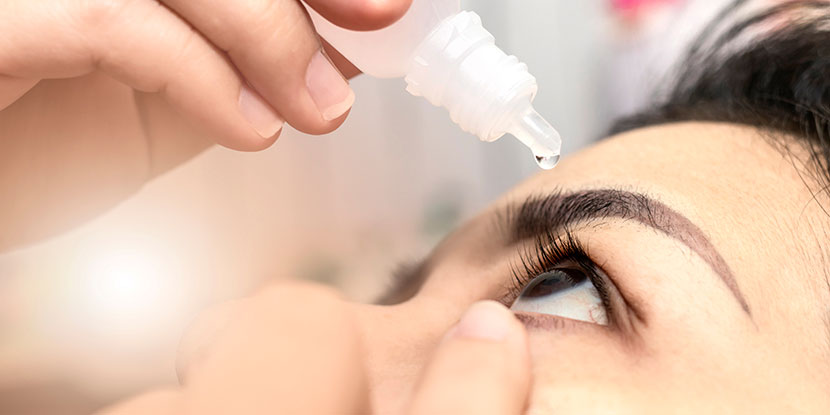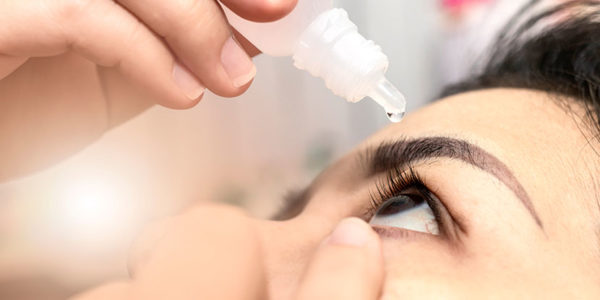Eye allergies — red, itchy, watery eyes that are bothered by the same irritants that cause sneezing and a runny nose among seasonal allergy sufferers — are very common.
In addition to having symptoms of sneezing, congestion and a runny nose, most of these allergy sufferers also experience itchy eyes, watery eyes, red eyes and swollen eyelids.
In some cases, eye allergies also can play a role in conjunctivitis (pink eye) and other eye infections.
If you think you have eye allergies, here are a few things you should know — including helpful tips on how to get relief from your red, itchy, watery eyes.
Causes of Eye Allergies
Allergens are normally harmless substances that cause problems for individuals who are predisposed to allergic reactions. The most common airborne allergens that cause eye allergies are pollen, mold, dust and pet dander.
Eye allergies also can be caused by reactions to certain cosmetics or eye drops, including artificial tears used for treating dry eyes that contain preservatives.
Food allergies and allergic reactions to bee stings or other insect bites typically do not affect the eyes as severely as airborne allergens do.
How to Get Relief from Eye Allergies
To get relief from your eye allergies and itchy, watery eyes, you can take a few approaches:
Avoid allergens.
The best approach to controlling your eye allergy symptoms is to do everything you can to limit your exposure to common allergens that you know you are sensitive to.
For example, on days when the pollen count is high, stay indoors as much as possible, with the air conditioner running to filter the air. Use high quality furnace filters that can trap common allergens and replace the filters frequently.
When you do go outdoors during allergy season, wear wraparound sunglasses to help shield your eyes from pollen, ragweed, etc., and drive with your windows closed.
Remove your contacts.
Because the surface of contact lenses can attract and accumulate airborne allergens, consider wearing glasses instead of contacts during allergy season. Or consider switching to daily disposable contacts that you discard after a single use to avoid the buildup of allergens and other debris on your lenses.
Often, the best choice if allergies are bothering your eyes is to discontinue wearing contacts altogether — at least until all your allergy symptoms are gone. Also, wearing eyeglasses with photochromic lenses can reduce allergy-related sensitivity to light and can help shield your eyes from airborne allergens.
Use eye drops.
Because eye allergies are so common, there are many brands of non-prescription eye drops available that are formulated to relieve itchiness, redness and watery eyes caused by allergies.
If your eye allergy symptoms are relatively mild, non-prescription eye drops for allergy relief may work very well for you and may be less expensive than prescription eye drops or other medication. Ask your eye doctor to recommend a brand to try.
Ask your doctor about prescription medications.
If your allergy symptoms are relatively severe or over-the-counter eye drops are ineffective at providing relief, you may need your eye doctor to prescribe a stronger medication.
Prescription eye drops and oral medications used to relieve eye allergies include:
1- Antihistamines:
Part of the body’s natural allergic response is the release of histamine, a substance that dilates blood vessels and making the walls of blood vessels abnormally permeable. Symptoms caused by histamine include a runny nose and itchy, watery eyes. Antihistamines reduce allergic reactions by blocking the attachment of histamine to cells in the body that produce an allergic response.
2- Decongestants:
Decongestants help shrink swollen nasal passages for easier breathing. They also reduce the size of blood vessels on the white (sclera) of the eye to relieve red eyes. Common decongestants include phenylephrine and pseudoephedrine. Combination drugs are available that contain both an antihistamine and a decongestant.
3- Mast cell stabilizers:
These medications cause changes in histamine-containing cells located in tissues throughout the body, including the conjunctiva of the eye and eyelids that prevent them from releasing of histamine and related mediators of allergic reactions. Because it may take several weeks for the full effects of mast cell stabilizers to take effect, these medications are best used before allergy season starts as a method to prevent or reduce the severity of future allergic reactions (rather than to treat acute allergic symptoms that already exist).
4- Non-steroidal anti-inflammatory drugs:
Also called NSAIDs, these eye drops can be prescribed to decrease swelling, inflammation and other symptoms associated with seasonal allergic conjunctivitis (also called hay fever).
5- Steroids:
Corticosteroid eye drops are sometimes prescribed to provide relief from acute eye allergy symptoms. They typically are prescribed for short-term use only.




